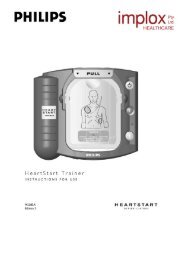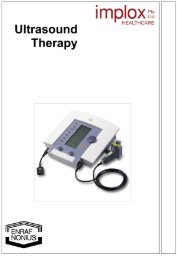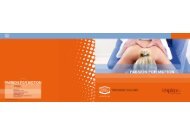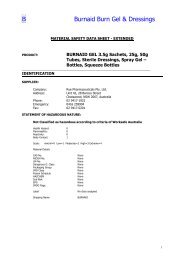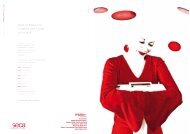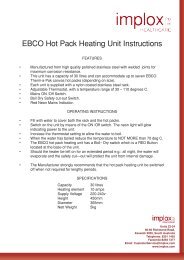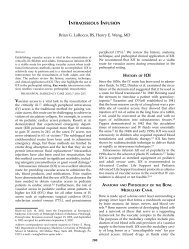Low and medium Frequency Electrotherapy - Implox
Low and medium Frequency Electrotherapy - Implox
Low and medium Frequency Electrotherapy - Implox
You also want an ePaper? Increase the reach of your titles
YUMPU automatically turns print PDFs into web optimized ePapers that Google loves.
Fig. 25.<br />
Symmetrical biphasic rectangular waveform.<br />
Fig. 26.<br />
Asymmetrical biphasic waveform.<br />
Fig. 27.<br />
Alternating rectangular waveform.<br />
3.5.1 Burst frequency<br />
The publications of Sjölund <strong>and</strong> Eriksson (27) have led to the use of a special frequency modulation in TENS therapy,<br />
known as ‘Burst TENS’ which is actually a modification of ‘acupuncture-like’ TENS.<br />
Burst TENS consists of a train or ‘burst’ of pulses of 2 Hz. Each burst lasts for 70 ms <strong>and</strong>, as the internal frequency of<br />
the bursts is 100 Hz, each burst contains 7 pulses. According to Sjölund <strong>and</strong> Eriksson, this results in the release of<br />
endorphins at the central level, which have a pain-reducing effect. They base this claim on the fact that the pain<br />
reduction is counteracted by naloxone, which is a morphine antagonist.<br />
Naloxone does not counteract the pain reduction achieved by stimulation using conventional TENS. A precondition<br />
for the release of endorphins appears to be the use of a high amplitude. Consequently, this form of stimulation is<br />
rather aggressive. The burst frequency is therefore principally used for problems that are not acute. In addition to the<br />
frequency of 2 Hz mentioned above, the literature also mentions other frequencies, varying from 1 to 5 Hz.<br />
In a burst application, a relatively high internal frequency current is preferable, not only because of the publications by<br />
Sjölund <strong>and</strong> Erikkson, but also because a low internal frequency brings the risk that no pulse falls within the burst.<br />
This can result in an irregular stimulation pattern.<br />
Fig. 28.<br />
Conventional <strong>and</strong> Burst TENS.<br />
22





